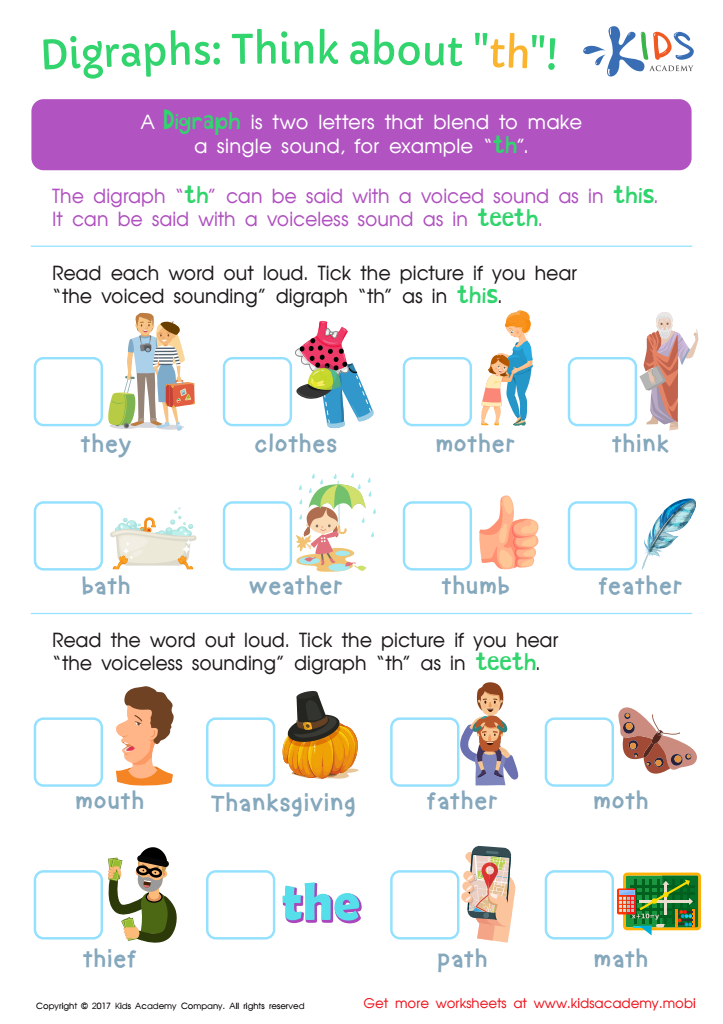Normal Ending Sounds Worksheets for Ages 4-7
4 filtered results
-
From - To
Discover our engaging Normal Ending Sounds Worksheets designed specifically for children ages 4-7. These interactive resources will help young learners identify and practice the ending sounds of various words, enhancing their phonemic awareness and reading skills. Each worksheet features fun illustrations and exercises tailored to capture the interest of young minds. Perfect for both classroom activities and at-home learning, our worksheets promote hands-on practice and reinforcement of key phonics concepts. Foster your child's literacy development while making learning enjoyable! Download our Normal Ending Sounds Worksheets today and watch your child's confidence and reading skills flourish!


Missing Digraph: Part 1 Worksheet


Digraphs: Think About "th" Worksheet


Twin Onset Worksheet


Phonics and Word Recognition: Assessment 1 ELA Worksheet
Normal ending sounds, also known as phonological endings, are crucial for early literacy development in children aged 4-7. These sounds help students identify and manipulate sounds in words, which is foundational for reading and writing. When children grasp normal ending sounds, they enhance their phonemic awareness, which is the ability to hear, identify, and work with individual sounds in spoken language.
Teaching these sounds encourages vocabulary expansion and improves spelling. For instance, recognizing how words with similar ending sounds, like "cat" and "bat," share phonetic patterns helps children make connections between different words and understand how to structure their own.
Furthermore, mastery of normal ending sounds supports comprehension and encourages fluent reading. As children encounter new words, recognizing patterns allows them to decode unfamiliar vocabulary more easily, boosting their confidence and enjoyment in reading.
For parents and teachers, fostering an understanding of normal ending sounds is not just about teaching phonics; it’s about unlocking a child’s potential for lifelong literacy. Engaging activities such as rhyming games, songs, or interactive reading can make learning these sounds fun while reinforcing their significance. Supporting this aspect of language development helps prepare children for academic success and effective communication as they grow.
 Assign to My Students
Assign to My Students













